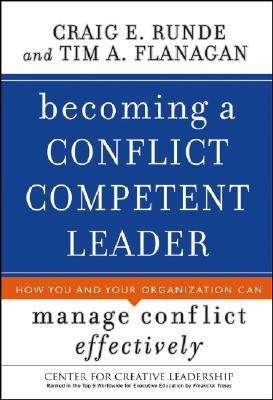
When’s the last time you re-read a book? Yes, RE-read one?! I don’t often, but I still make a point of paging through some ‘old favorites’ every now and again – I always find something I forgot I forgot about, or now understand with greater clarity and perspective.
One such example is my old, highlighted, dog-eared, tattered copy of, “becoming a CONFLICT COMPETENT LEADER” by Craig Runde and Tim Flanagan.
As if it had a mind of its own, the book opened to page 66 of Chapter 4:
“Much like the scales meteorologists use to measure the intensity levels of hurricanes, cyclones, and tornadoes, there is a progression of intensity as a conflict evolves.”
The authors then went on to identify five levels of intensity:
- Level One: Differences » When two people see a situation differently, understand the other party’s position and interests well, and feel no discomfort regarding the difference.
- Level Two: Misunderstandings » Times or situations where what is understood by one party is different from what is understood by the other party.
- Level Three: Disagreements » When two people see a situation differently and, regardless of how well they understand the other’s position and interests, feel discomfort that the other party disagrees.
- Level Four: Discord » Situations where the conflict causes difficulties in the relationship of the people involved even when they are not dealing with the original conflict.
- Level Five: Polarization » Conflict situations characterized by severe negative emotions and behavior with little or no hope for reconciliation.
“The intensity levels of conflict are important to consider for several reasons,” continued Runde and Flanagan. “First, a conflict competent leader must be able to recognize conflict. The more intense conflicts are easier to spot but are also potentially more complex. A leader who spots only conflicts that are at the higher intensity levels may find that these conflicts are more difficult to handle and may have an impact on more people than originally thought.
“Second, the earlier that conflicts are detected, the more willing the parties are to explore their differences. In other works, when conflict appears as a Difference, a Misunderstanding, or a Disagreement, the heat or emotion in the conflict is less intense. The conflict may be more approachable at these levels.
“Finally, understanding the intensity levels can be helpful to leaders in assessing their own responses to conflict situations. As leaders encounter conflict in the organizations, they will find themselves involved in some of them as participants. Knowing the signs of intensity can assist them in monitoring their own responses and reactions so they can choose to cool, or deintensify, the conflict through their words and actions.”
It’s important to realize, too, that what level a conflict happens to be at in any particular moment can suddenly – and drastically – change for the worse. All it really takes is one ill-advised comment coupled with an unfiltered response back and … BAM! … You’ve just entered Discord and Polarization.
While conflict competent leaders know there’s no need to panic when this happens, they also know that THIS is when some of their absolute best work is needed.
Ready? Set? De-escalate!
Wondering how Conflict Competent YOU are? Take the Conflict Dynamics Profile available through LeadershipTraction » http://leadershiptraction.com/conflict/.